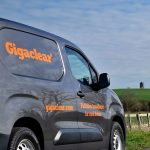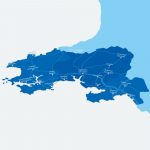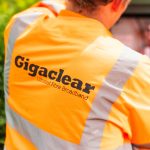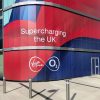Ofcom UK Delays Second Attempt at BT Dark Fibre Access UPDATE
The UK telecoms regulator has announced that they will NOT attempt to reintroduce a “temporary remedy” for Dark Fibre Access, which would have required BT (Openreach) to provide a restricted form of DFA in the leased line (Ethernet) markets for the period until March 2019. But DFA will be tried again.
The originally proposed Dark Fibre Access (DFA) solution would have enabled rival ISPs to gain “physical access” to Openreach’s existing fibre optic cables (i.e. enabling them to install their own equipment at either end of the fibre within cable ducts). Several ISPs are known to have expressed a strong interest in using the service (TalkTalk, Three UK, Vodafone and SSE Enterprise Telecoms etc.).
The regulator claimed that this new DFA, which they had initially rejected back in 2012 (here), could foster more competition and speed-up the roll-out of faster broadband services around the UK (e.g. backhaul capacity for new networks). However infrastructure builders, such as BT, Virgin Media, Cityfibre and Zayo, all warned that it could equally act to discourage investment in the construction of new fibre optic networks.
Advertisement
One of the main bones of contention stemmed from Ofcom’s market definitions, which reflected their plan to make DFA available in all parts of the UK (RoUK) except central London (including the City of London and Docklands). Suffice to say that none of the major dark fibre builders were pleased with this and BT launched a legal challenge, which ultimately found that the regulator’s market definitions were “incorrect” (here and here).
The market definitions were so central to Ofcom’s 2016 Business Connectivity Review (BCMR) that they were left with little choice but to revoke many of the proposed changes (here), albeit with a proposal to try again. One option was to introduce a restricted DFA remedy for leased line services at and below 1Gbps until March 2019 but the regulator has now decided against this.
Ofcom’s Statement
BT is currently subject to a package of temporary regulation in relation to certain Ethernet services, including a charge control. This temporary regulation covers the period to 31st March 2019. In November 2017 we consulted on whether it would be appropriate to add a restricted form of dark fibre remedy to this package of temporary measures. … Following input from stakeholders, [we have decided] not to introduce this restricted form of dark fibre during the period to March 2019.
However, we remain of the view that dark fibre can play an important role in promoting competition in leased lines. In particular, we believe that dark fibre has an important role where duct and pole access (“DPA”) is not an effective remedy, for example because usage restrictions may prevent DPA being used. We will therefore be considering an enhanced dark fibre as a remedy in our further market review.
The update notes that some of the ISPs most likely to purchase DFA “made it clear that a service at higher bandwidths would be significantly more useful to them” and that they would only use a DFA product that was restricted to lower bandwidths in “very low volumes“, because they were likely to need to upgrade to higher bandwidths within the next few years.
The fact that so many alternative network ISPs are now seeking to build significantly faster ultrafast broadband and Gigabit broadband networks over the next few years is likely to have played a role in the above decision. In short, we’ll have to wait for the conclusion of Ofcom’s next business connectivity review before seeing a regulated DFA solution (they’re currently preparing to begin that process).
Advertisement
An Openreach Spokesperson said:
“We note Ofcom’s decision not to impose a regulated Dark Fibre product during the period to March 2019 and we will continue to engage with them as they develop their thinking ahead of the next market review.
We remain confident that our recently launched alternative high bandwidth product – OSA Filter Connect – will meet the needs of our wholesale customers in this fast evolving market. We’ve worked closely with them to develop OSA Filter Connect, and we believe it offers the flexibility, scalability and service guarantees they need at an extremely competitive price.”
As above, Openreach has recently launched their new new OSA Filter Connect product, which is a kind of virtual (grey) dark fibre style solution (here), although it probably won’t suit every ISP but others have shown a strong interest.
UPDATE 2:08pm
Added Openreach’s final comment above and Cityfibre’s one below.
Mark Collins, Director Strategy & Policy at CityFibre, said:
“Ofcom’s decision to withdraw its recently proposed restricted Dark Fibre Access remedy recognises that the supply of alternative dark fibre solutions is increasing at pace in many UK towns and cities. The decision to stimulate infrastructure competition rather than impose deeper regulation of BT Openreach’s products is consistent with Ofcom’s strategy to reduce the UK’s dependency on Openreach and is warmly welcomed by CityFibre.
Today, CityFibre provides open access dark fibre infrastructure in 42 towns and cities, providing future proof, unrestricted connectivity solutions for public sector and enterprise customers, as well as full-fibre connectivity to address thousands of mobile towers and future 5G small cells. CityFibre’s expansion plans – which target up to 100 towns and cities by 2025 and include projects already underway to deliver full fibre to homes across whole cities – are best supported through Ofcom’s introduction of duct and pole access (DPA).
We welcome the opportunity to engage with Ofcom in its upcoming Business Connectivity Market Review (BCMR) to help shape regulation that drives competitive investment in, and consumption of, full-fibre connectivity nationwide. We will urge Ofcom to remove the remaining restrictions on DPA to help accelerate the rollout of alternative fibre solutions.”
Mark is a professional technology writer, IT consultant and computer engineer from Dorset (England), he also founded ISPreview in 1999 and enjoys analysing the latest telecoms and broadband developments. Find me on X (Twitter), Mastodon, Facebook, BlueSky, Threads.net and Linkedin.
« Arqiva and O2 Boost London Mobile Coverage via 300 Small Cells

















































Comments are closed